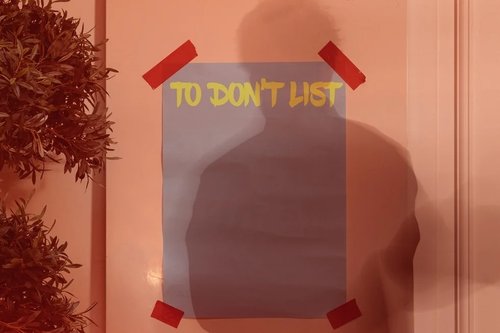Keep or delete: Experts weigh in on your LinkedIn profile
Sep 14, 2023 - updated Dec 20, 2023
3 mins


Freelance writer and podcast producer
If you’ve been on the job market for any length of time, you’ve probably been told to tailor your resume to the position you’re applying to—no big deal. But what about your digital resume? As your career grows and changes, or you transition from one field into another, should your LinkedIn remain a repository of everything you’ve ever done professionally? Or should you pare back the no-longer-relevant positions for a cleaner profile?
To capture both sides of this argument, we spoke to two experts with opposing viewpoints. Tabitha Cavanagh, longtime recruiter, argues for paring back no-longer-relevant positions from your profile. On the other side, Kamara Toffolo, job search strategist and LinkedIn Top Voice, argues against deleting old jobs off your page.
Ready, set, fight!
The argument for deleting old jobs
An internship in college, a part-time summer job, a role that didn’t last as long as you’d hoped … If you’re feeling the temptation to exclude certain jobs from what’s essentially seen as your digital resume, here are some reasons to go for it.
Clarity
When recruiters like Cavanagh look at your LinkedIn profile, they’re hoping to see a clear narrative of who you are and why you’re a great fit for the position they’re sourcing. “It’s challenging when you go to someone’s profile and their headline says they do 75 different things. You’re like, well, which is it, and what do you want to do? It’s helpful if someone has a little bit of a direction.”
Help recruiters help you
Studies have shown that recruiters look at resumes for less than 11 seconds each. And it’s not because they’re disinterested; they’ve got a pile of people to get through, and resumes are either clearly a fit, or clearly not. With LinkedIn profiles, it’s the same game, says Cavanagh: “You definitely know when you look at those resumes and those LinkedIn profiles that have too much on them and it’s almost like your eyes are bleeding. There’s so much text, or they’re so disjointed and discombobulated that you can’t understand.” It can behoove you to delete no-longer-relevant information, allowing recruiters to see the more relevant information front and center.
But what about career transitions?
Of course, if you’re transitioning from one field to another, nearly all of your previous experience might be ‘irrelevant’ to your target position. In that case, says Cavanagh, find a way to spin it: “There’s almost always a way to pull out something you did and translate it—show someone how it matters, why it matters, then connect those dots.”
The argument against deleting old jobs
Even if your previous positions don’t seem 100% relevant to your current career aspirations, sometimes it’s hard to let go. Here’s how you can justify keeping your older experiences visible on your LinkedIn profile.
All experience is valuable experience
On the flip side of Cavanagh’s views, Toffolo believes that you can and should keep all of your jobs on your page, as long as you reframe them: “There’s probably work experience and accomplishments you have in [‘irrelevant’ old roles] that will reinforce the transferable skills that are required of you in the role you’re targeting.” That’s a much better use of space than deleting an old position and leaving a noticeable career gap in its place. “We’re reframing, we’re reshaping how we present that accomplishment so that it really makes sense to your future employer in the context of your new target job.”
Says Toffolo, you can think about making your old jobs seem more relevant using the framework of the 5 R’s: “Reframe previous work experience so that it is Relevant and it Relates to your target job, Reinforces your required strengths and skills in that target job and Resonates with the target employer.”
Use every part of the profile
While Toffolo says that your resume is primarily a buttoned-up marketing document, on LinkedIn, “We have more room to play, more room to let the content kind of breathe. Essentially, more room to talk about the work that we loved,” and the work that you’re proud of. You might be leaving your whole work history (reframed to your advantage) in the Experience section of your profile, but you can also make sure you’re using the headline to your advantage. And don’t forget to use the summary to help tell your story: “That’s where you can really dive into the strengths that you would bring to your role.” LinkedIn is, at its core, a social media platform, where your network can come to get a sense of who you are in the world. The non-resume portions of your profile can help illuminate this.
Some caveats
The only time Toffolo might suggest someone remove jobs from their LinkedIn profile is when the candidate is in a position where they fear ageism might come into play in the hiring process. If a job is decades out of date and irrelevant, you’re probably safe to remove it. And if you’re a multi-hyphenate looking for a number of different roles, things might prove tricky. Consider paring down your experience and making your profile targeted to one or two types of roles in order to help tell that cohesive story.
Final thoughts
No matter whether you choose to keep older jobs on your LinkedIn profile and reframe them, or delete them altogether, remember that your career path isn’t ‘wrong’ if it’s non-linear. Says Toffolo, “I’ve never seen a career path where everything lined up perfectly. I’m less worried about job, job, job, job job. I’m more worried about what are you saying about that job.”
Photo: Welcome to the Jungle
Follow Welcome to the Jungle on Facebook, LinkedIn, and Instagram, and subscribe to our newsletter to get our latest articles every week!

More inspiration: Applying for jobs

Should you job hunt over the holidays? Tips to beat the new year rush
Searching for a new job to start fresh in 2025? The holiday season might be the right time for you to start the process.
Dec 09, 2024

Introverts & extroverts: Strategies to ace your interview
Job interviews can be tough, whether you're a social butterfly or a quieter introvert. The key to standing out is being yourself.
Aug 20, 2024

Should you be scared of the ghost job trend?
Have you ever been ignored after applying for a job? You may be a victim of the ghost job trend.
Jun 12, 2024

Lost in translation: Decoding bizarre job descriptions
“Candidates with no sense of humor need not apply.” Um …
Jan 25, 2024

Nailing your job search: Writing a to-don’t list for success
Don’t want this, don’t want that … Writing down things you want to avoid in a new job could be your job-hunting key.
Jan 18, 2024
The newsletter that does the job
Want to keep up with the latest articles? Twice a week you can receive stories, jobs, and tips in your inbox.

Looking for your next job?
Over 200,000 people have found a job with Welcome to the Jungle.
Explore jobs